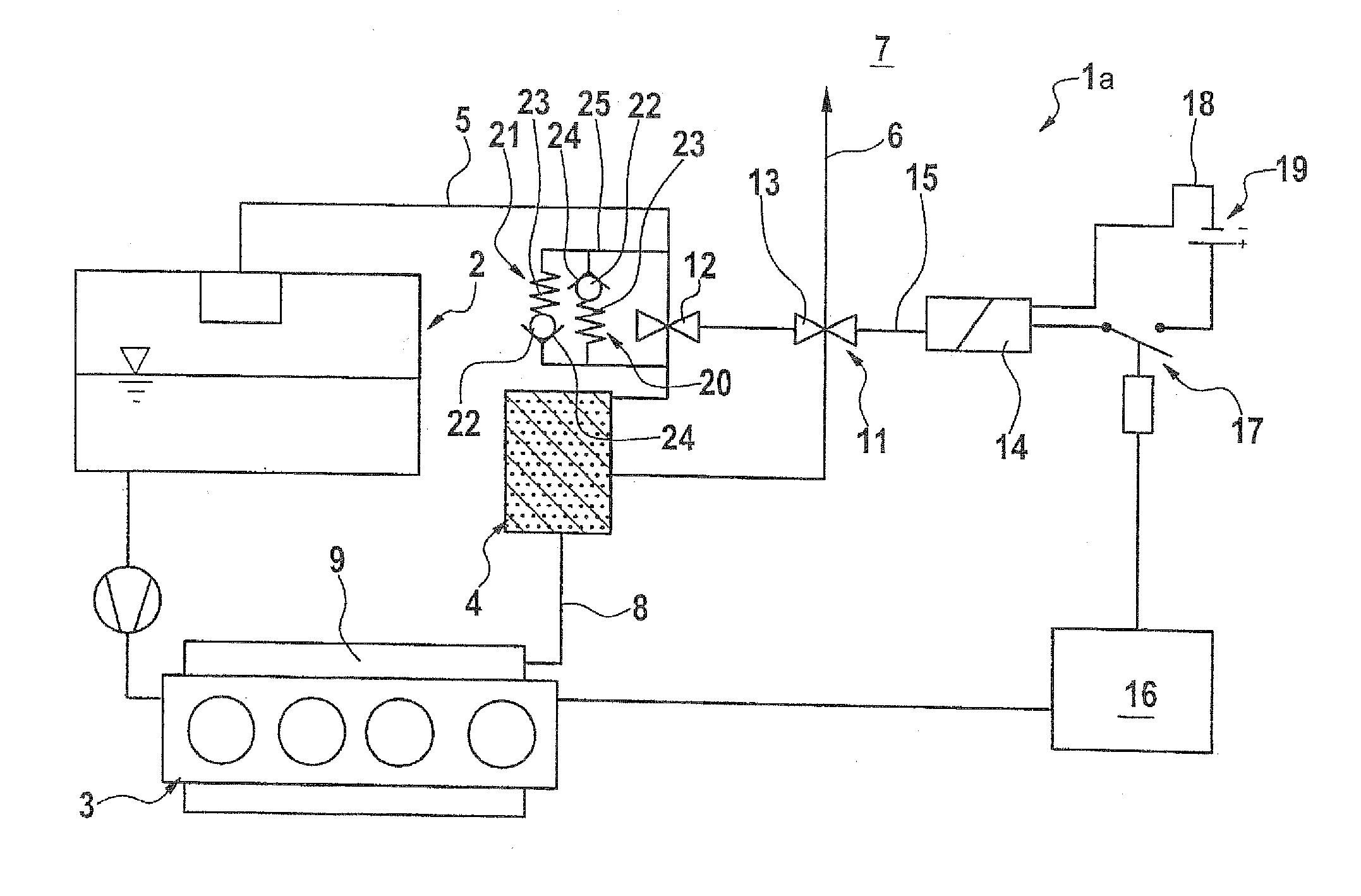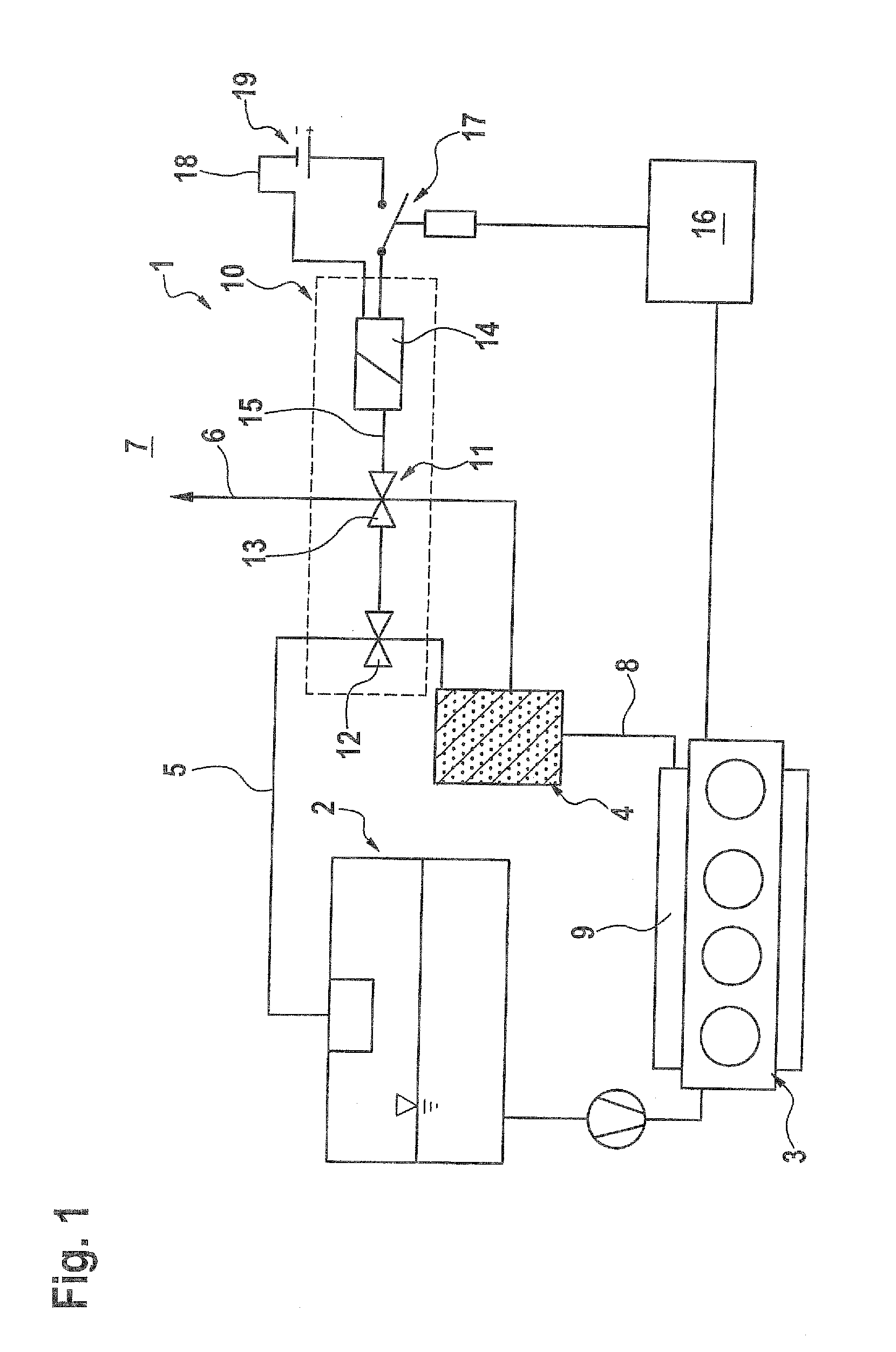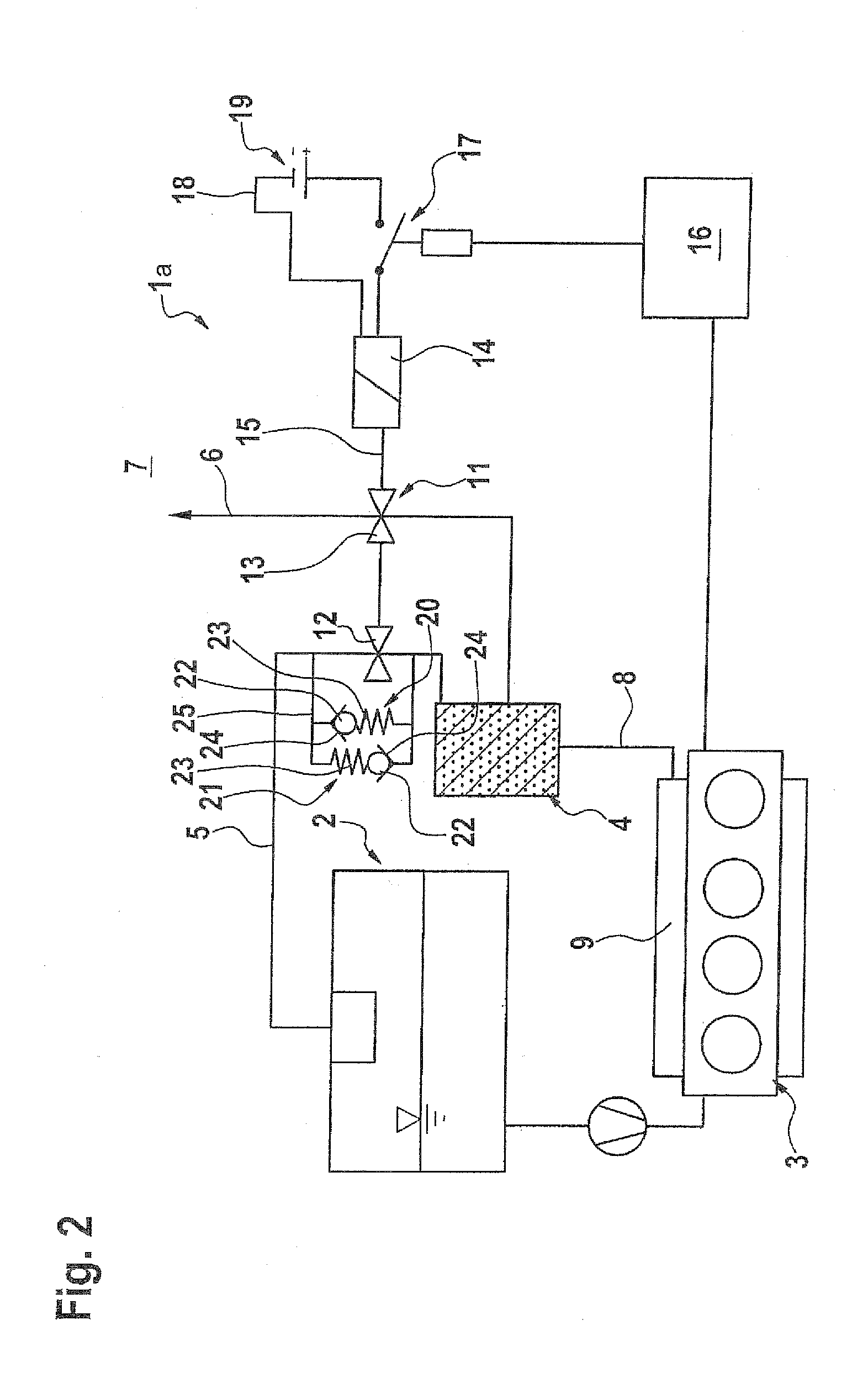Tank venting device for a fuel tank of a motor vehicle
a technology for venting devices and fuel tanks, which is applied in the direction of machines/engines, combustion air/fuel air treatment, transportation and packaging, etc., can solve the problem that activated carbon filters possibly charged with a greater amount of hydrocarbons cannot be regenerated over a long period
- Summary
- Abstract
- Description
- Claims
- Application Information
AI Technical Summary
Benefits of technology
Problems solved by technology
Method used
Image
Examples
first embodiment
[0022]Turning now to the drawing, and in particular to FIG. 1, there is shown a schematic illustration of a tank venting device according to the present invention, generally designated by reference numeral 1, for venting a fuel tank 2 of a plug-in electric drive motor vehicle (not shown) which is operated by an electric motor (not shown) and includes an internal combustion engine 3 as auxiliary motor for charging a vehicle battery 19.
[0023]The tank venting device 1 includes an activated carbon filter 4. A first gas line 5 connects the activated carbon filter 4 with the interior of the fuel tank 2. A second gas line 6 connects the activated carbon filter 4 with the environment or atmosphere 7, and a third gas line 8 connects the activated carbon filter 4 with an intake tract 9 of the internal combustion engine 3. The tank venting device 1 further includes a valve unit 10 which is indicated in FIG. 1 by a broken line. The valve unit 10 includes a two-stage solenoid valve 11 which has ...
second embodiment
[0027]Referring now to FIG. 2, there is shown a schematic illustration of a tank venting device according to the present invention, generally designated by reference numeral 1a. Parts corresponding with those in FIG. 1 are denoted by identical reference numerals and not explained again. The description below will center on the differences between the embodiments. In this embodiment, provision is made for the presence of at least two overflow valves 20, 21. Each of the overflow valves 20, 21 includes a valve member 22 which is urged by a valve spring 23 against a valve seat 24. The overflow valve 20 operates hereby as overpressure protection valve whereas the overflow valve 21 operates as low pressure protection valve. The overpressure protection valve 21 opens spontaneously, when the pressure on the valve-spring-distal side of the valve member 22 exceeds an opening pressure defined by the spring force, and closes spontaneously, when the pressure drops again below the opening pressur...
third embodiment
[0029]FIG. 3 shows a schematic illustration of a tank venting device according to the present invention, generally designated by reference numeral 1b. Parts corresponding with those in FIGS. 1 and 2 are denoted by identical reference numerals and not explained again. The description below will again center on the differences between the embodiments. In this embodiment, provision is made for two pairs of overflow valves 20, 21 and 20b, 21b.
[0030]In general, overflow valves are always arranged in pairs, with one overflow valve of each pair operating as overpressure protection valve and the other overflow valve of each pair operating as low pressure protection valve.
[0031]In the tank venting device 1b of FIG. 3, the pair of overflow valves 20, 21 is arranged in a same manner as described with reference to the tank venting device 1a of FIG. 2, with a bypass line 26 which branches off the first gas line 5 upstream of the first valve stage 12 and feeds back into the first gas line 5 down...
PUM
 Login to View More
Login to View More Abstract
Description
Claims
Application Information
 Login to View More
Login to View More - R&D
- Intellectual Property
- Life Sciences
- Materials
- Tech Scout
- Unparalleled Data Quality
- Higher Quality Content
- 60% Fewer Hallucinations
Browse by: Latest US Patents, China's latest patents, Technical Efficacy Thesaurus, Application Domain, Technology Topic, Popular Technical Reports.
© 2025 PatSnap. All rights reserved.Legal|Privacy policy|Modern Slavery Act Transparency Statement|Sitemap|About US| Contact US: help@patsnap.com



